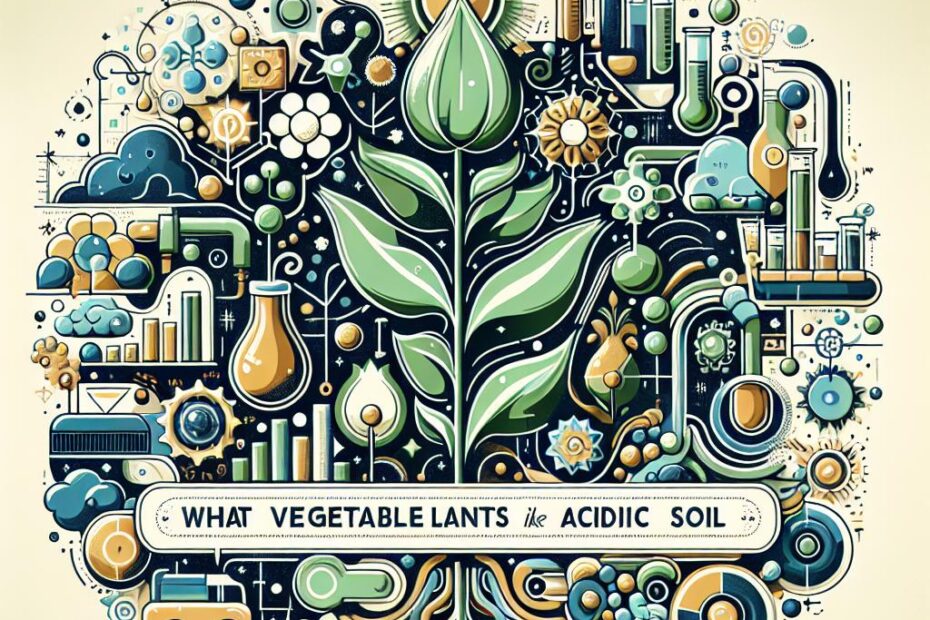When it comes to growing vegetables, the type of soil you use can make a big difference in the success of your garden. Some vegetables thrive in acidic soil, while others prefer neutral or alkaline soil. In this article, we will explore what vegetable plants like acidic soil, why they prefer it, and how you can create the ideal growing conditions for these plants.
What is Acidic Soil?
Acidic soil, also known as sour soil, has a pH level below 7.0. A pH level of 7.0 is considered neutral, while anything below 7.0 is acidic and anything above 7.0 is alkaline. Most vegetable plants prefer slightly acidic soil with a pH level between 6.0 and 6.8. In acidic soil, nutrients like iron, manganese, and zinc are more readily available to plants, which can promote healthy growth and higher yields.
What Vegetable Plants Like Acidic Soil?
-
Tomatoes: Tomatoes are one of the most popular garden vegetables that thrive in acidic soil. They prefer a pH level between 5.5 and 6.8. Acidic soil can help prevent blossom end rot in tomatoes, a common problem caused by calcium deficiency.
-
Potatoes: Potatoes also prefer slightly acidic soil with a pH level between 5.0 and 6.0. Acidic soil can help prevent scab disease in potatoes, which can affect the quality of the harvest.
-
Blueberries: Blueberries are a classic example of a fruit that thrives in acidic soil. They prefer a pH level between 4.5 and 5.5. Acidic soil can help blueberry plants absorb nutrients like iron and manganese more effectively.
-
Peppers: Peppers prefer slightly acidic soil with a pH level between 5.5 and 7.0. Acidic soil can help peppers develop stronger roots and produce larger fruits.
-
Radishes: Radishes are root vegetables that grow best in slightly acidic soil with a pH level between 6.0 and 7.0. Acidic soil can help radishes develop a crisp texture and spicy flavor.
Creating Acidic Soil for Your Vegetable Plants
If you want to create acidic soil for your vegetable plants, there are a few methods you can try:
-
Add Organic Matter: Incorporating organic matter like compost, peat moss, or pine needles can help lower the pH level of your soil and make it more acidic.
-
Use Acidifying Fertilizers: Some fertilizers are specifically designed to lower the pH level of soil. Look for fertilizers that contain sulfur or iron sulfate to acidify your soil.
-
Test Your Soil: Before adjusting the pH level of your soil, it’s important to test it first. You can use a soil test kit to determine the current pH level of your soil and make adjustments accordingly.
-
Amend Soil Regularly: Even if your soil is already slightly acidic, it’s important to monitor the pH level regularly and make adjustments as needed. Adding acidic amendments like coffee grounds or vinegar can help maintain the ideal pH level for your vegetable plants.
Benefits of Acidic Soil for Vegetable Plants
- Improved Nutrient Availability: Acidic soil can help plants absorb essential nutrients more effectively, leading to healthier growth and higher yields.
- Disease Prevention: Acidic soil can help prevent common diseases like blossom end rot and scab in vegetable plants.
- Enhanced Flavor: Some vegetables grown in acidic soil may develop sweeter or more intense flavors, making them more enjoyable to eat.
Conclusion
In conclusion, many vegetable plants thrive in acidic soil due to the improved nutrient availability and disease prevention it offers. By creating the ideal growing conditions for these plants, you can enjoy a bountiful harvest of healthy and flavorful vegetables. Whether you’re growing tomatoes, potatoes, blueberries, peppers, or radishes, adjusting your soil’s pH level can make a big difference in the success of your garden. Experiment with different methods of acidifying your soil and monitor the results to ensure your vegetable plants are receiving the optimal conditions for growth.
